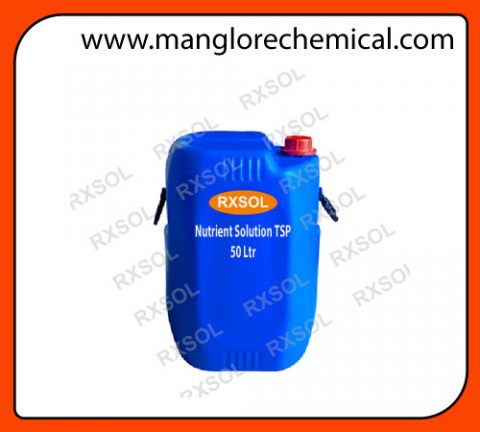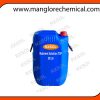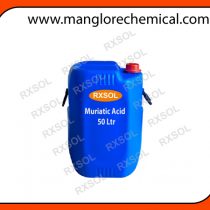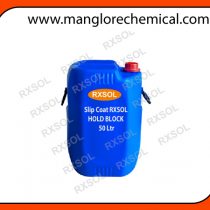Product Name
Nutrient Solution TSP
Product Code
RXSOL-34-1522-055
Company Details:
RX MARINE INTERNATIONAL
105, A wing , BSEL , TECH PARK.
VASHI ,NEW BOMBAY 400703 INDIA
Phone
+91 22 27815541 / 42
Fax
+91 22 2781 1318 :::AOH :0091 9821214367
Email
mail@rxmarine.com
Chemical Name
Percent
Value
Cas No
TSP,min.
%
10-20
7601-54-9
Synonym (s)……………….………………Sodium orthophosphate dodecahydrate
Potential Health Effects:-
Inhalation
Material is irritating to mucous membranes and upper respiratory tract. Exposure can cause coughing, chest pains and difficulty breathing.
Ingestion
May cause burns of the mouth, throat and stomach. Aspiration into the lungs may occur during ingestion or vomiting, resulting in lung injury.
Symptoms may include bleeding, vomiting diarrhoea, fall in blood pressure. Damage may appear days after exposure.
Skin Contact
Material is irritating to mucous membranes and upper respiratory tract. Exposure can cause coughing, chest pains and difficulty breathing.
Eye Contact
May cause eye burns. May cause permanent corneal injury. May cause severe eye irritation. Corrosive! Causes irritation of eyes, and with greater exposures, it can cause burns that may result in permanent impairment of vision, even blindness.
Inhalation
Remove to fresh air. If not breathing, give artificial respiration. If breathing is difficult, give oxygen. Call a physician.
Ingestion
Do Not Induce Vomiting! Give large quantities of water or milk if available. Never give anything by mouth to an unconscious person. Get medical attention immediately.
Skin Contact
Immediately flush skin with plenty of water for at least 15 minutes while removing contaminated clothing and shoes. Call a physician, immediately. Wash clothing before reuse.
Eye Contact
Immediately flush eyes with plenty of water for at least 15 minutes, lifting lower and upper eyelids occasionally. Get medical attention immediately.
Fire
Not considered to be a fire hazard. The hot or molten material can react violently with water. Can react with certain metals, such as aluminium, to generate flammable hydrogen gas.
Explosion
Not considered to be an explosion hazard.
Fire Extinguishing Media
Use any means suitable for extinguishing surrounding fire. Adding water to caustic solution generates large amounts of heat.
Pick up and place in a suitable container for reclamation or disposal, using a method that does not generate dust. Residues from spills can be diluted with water, neutralized with a dilute acid such as acetic, hydrochloric or sulfuric. Absorb neutralized caustic residue on clay, vermiculite or other inert substance and package in a suitable container for disposal.
Keep in a tightly closed container. Protect from physical damage. Store in a cool, dry, ventilated area away from sources of heat, moisture and incompatibilities. Always add the caustic to water while stirring; never the reverse. Containers of this material may be hazardous when empty since they retain product residues (dust, solids); observe all warnings and precautions listed for the product. Do not store with aluminum or magnesium. Do not mix with acids or organic materials.
Airborne Exposure Limits
OSHA
OSHA Permissible Exposure Limit (PEL)
2 mg/m3 Ceiling – ACGIH
Threshold Limit Value (TLV)
2 mg/m3 Ceiling
Ventilation System
A system of local and/or general exhaust is recommended to keep employee exposures below the Airborne Exposure Limits. Local exhaust ventilation is generally preferred because it can control the emissions of the contaminant at its source, preventing dispersion of it into the general work area. Please refer to the ACGIH document, Industrial Ventilation, A Manual of Recommended Practices, most recent edition, for details.
Personal Respirators
If the exposure limit is exceeded, a half-face dust/mist respirator may be worn for up to ten times the exposure limit or the maximum use concentration specified by the appropriate regulatory agency or respirator supplier, whichever is lowest. A full-face piece dust/mist respirator may be worn up to 50 times the exposure limit, or the maximum use concentration specified by the appropriate regulatory agency, or respirator supplier, whichever is lowest. For emergencies or instances where the exposure levels are not known, use a full-facepiece positive-pressure, air-supplied respirator.
WARNING
Air-purifying respirators do not protect workers in oxygen-deficient atmospheres.
Skin Protection
Wear impervious protective clothing, including boots, gloves, lab coat, apron or coveralls, as appropriate, to prevent skin contact.
Eye Protection
Use chemical safety goggles and/or a full face shield where splashing is possible. Maintain eye wash fountain and quick-drench facilities in work area.
Technical Parameter
Unit
Specification
Apperance
Clear slightly yellowish liquid
Concentration of the supplied product
TSP 10% (w/w)
Dilution
%
Not required
Dosage
WWTP
Approx 1.12 lit/kg BOD to be added
Quantity (Initial Charges +Annual consumption +15% spare Charges+ 1%spillage etc)
243.7 m3
Physical Properties
Colour
Almost Colourless
Odour
Light ammoniated odour
pH (Concentrated product)
Alkaline Powder
pH (aqueous solution)
10.0-10.5 (10 g/lit)
Boiling point/range
Degree C
100
Flash Point(Pensky / Martens)
Degree C
Non
Density at 20*C
kg/m3
1.1 g/cm3
Solubility in water
% weight
Highly soluble
segregation coefficient (Pow)
-2 log
Viscosity at 20*C
mPas
5-10 cps
Vapour Pressure at 20*C
kg/cm2
20 hPA
Vapour density
Not Applicable
Decomposition
Degree C
over 130
Freeze point
Degree C
-5
Ignition Temperature
Degree C
Non Flammable
Chemicals Properties
Evaporation result
%
Anhydrous Trisodium Phosphate (TSP) 10-20%
Stability
Stable under ordinary conditions of use and storage. Very hygroscopic. Can slowly pick up moisture from the air and react with carbon dioxide from air to form sodium carbonate.
Hazardous Decomposition Products
Decomposition by reaction with certain metals releases hydrogen gas.
Hazardous Polymerization
Will not occur.
Incompatibilities
Contact with nitromethane and other similar nitro compounds causes the formation of shock-sensitive salts. Contact with metals such as aluminium, tin, and zinc causes the formation of flammable hydrogen gas.
Conditions to Avoid
Moisture, dusting and incompatible.
Skin Irritation
Irritant wash with soapy water
Eye Irritant
Moderate irritant, flush with copious amounts of water
Sensitization
Not Sensitizing.
(All above information as per data available with us)
Comment
Not applicable
Ecotoxicity
Fish Toxicity……………………………… EC50(96hr, Mosquitofish): 151mg/L Biodegradability………….……….……. The resulting phosphate
Environmental Effects
Not available
Do not allow the product to reach drinking water soil.
This material must be disposed with local national regulations. Product Recommendation ( Recommended cleaning agent: water ) Can be burnt under adherence to the necessary technical regulations. Disposal must be made according to official regulations.Can be reused or recycled after cleaning .
Transport/Additional information
Land transport ADR/RID (cross-border)
ADR/RID class: –
Maritime transport IMDG:
IMDG Class: – Marine pollutant: No
Air transport ICAO-TI and IATA-DGR:
ICAO/IATA Class: – TDG
• Irritating to eyes and skin.
• Safety phrases
2 Keep out reach of children
If swallowed, seek medical attention immediately
22 Harmful if swallowed
26 In case of contact with eyes, rinse immediately with plenty of water and
seek medical attention.
27 After contact with skin, wash immediately with plenty of water and soap and rinse thoroughly.
• National regulations
These data are based on our present knowledge. However, they shall not constitute a guarantee for any specific product features and shall not establish a legally valid contractual relationship. Department issuing data specification sheet Environment protection department. Note: No Environmental Problems Are Expected If The Product Is Handled Correctly.
|







Reviews
There are no reviews yet.